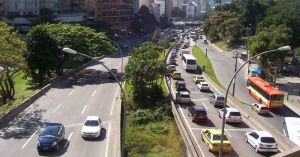Stoned Driving Risks Amid Marijuana Legalization Efforts
In Texas, there are no definitive plans to legalize medical marijuana although there is much speculation about when legalization will come to the Lone Star state. 
When marijuana is legalized for either recreational or medicinal use, rules have to be established to determine if a motorist is too impaired by THC to drive safely. The question of whether a driver is impaired can be left to the discretion of a law enforcement officer. A state can also set a limit on the amount of THC someone can have in their blood, just as the .08 blood-alcohol concentration exists for impaired driving. States that have already legalized marijuana are grappling with how to best protect driver safety and Texans may want to watch to see how their decisions impact road safety.
But as personal injury lawyers know, the regulation of stoned driving can be an inexact science. The levels of THC in someone’s blood do not necessarily correlate with the level of impairment. The ABA Journal indicates that both Colorado and Washington have set a maximum THC limit of 5 nanograms before someone is considered impaired, but that this may not be the best or most precise way to judge whether a motorist is able to drive safely or not.
Regulating Stoned Driving
Oregon is considering legalizing marijuana but has not followed the lead of Colorado or Washington regarding setting a maximum THC limit. The ballot measure addressing legalization sets no limit and it would be up to law enforcement officers to use their discretion to decide if someone is stoned and shouldn’t b operating his vehicle.
There are good arguments to make for why a THC level may not be the best way to judge if someone is a safe driver. A British study showed that a person who uses marijuana is most euphoric 30 minutes after taking the drug, but his or her THC levels would peak 10 minutes after smoking cannabis and would actually fall by the time he is most impaired. Scientists have been unable to establish a direct link between the amount of active THC in a person’s body and a driver’s impairment level, and one forensics lab supervisor expressed concern that the THC concentration in the blood was not correlated to impairment.
Of course, leaving the issue of judging impairment to the officer’s discretion is also problematic as mistakes can be made and securing a conviction for stoned driving could be more difficult without objective evidence. This is a problem because stoned driving is a major danger to other motorists.
As the FDL Reporter indicates, brain imaging tests have found that people who are stoned must use more of their brain to correctly perform simple tasks. Stoned motorists also have delayed reaction times, poorer peripheral vision and a reduced ability to multitask. This makes an accident far more likely to occur.
Between 1994 and 2011, the number of drivers involved in fatal collisions in Colorado testing positive for marijuana has more than doubled, and things are likely to get much worse as marijuana use becomes more widely accepted. Something needs to be done to effectively deterred motorists from driving stoned.
Contact a San Antonio accident lawyer at the Herrera Law Firm. Call 800-455-1054 or visit http://www.herreralaw.com for a free case consultation.













